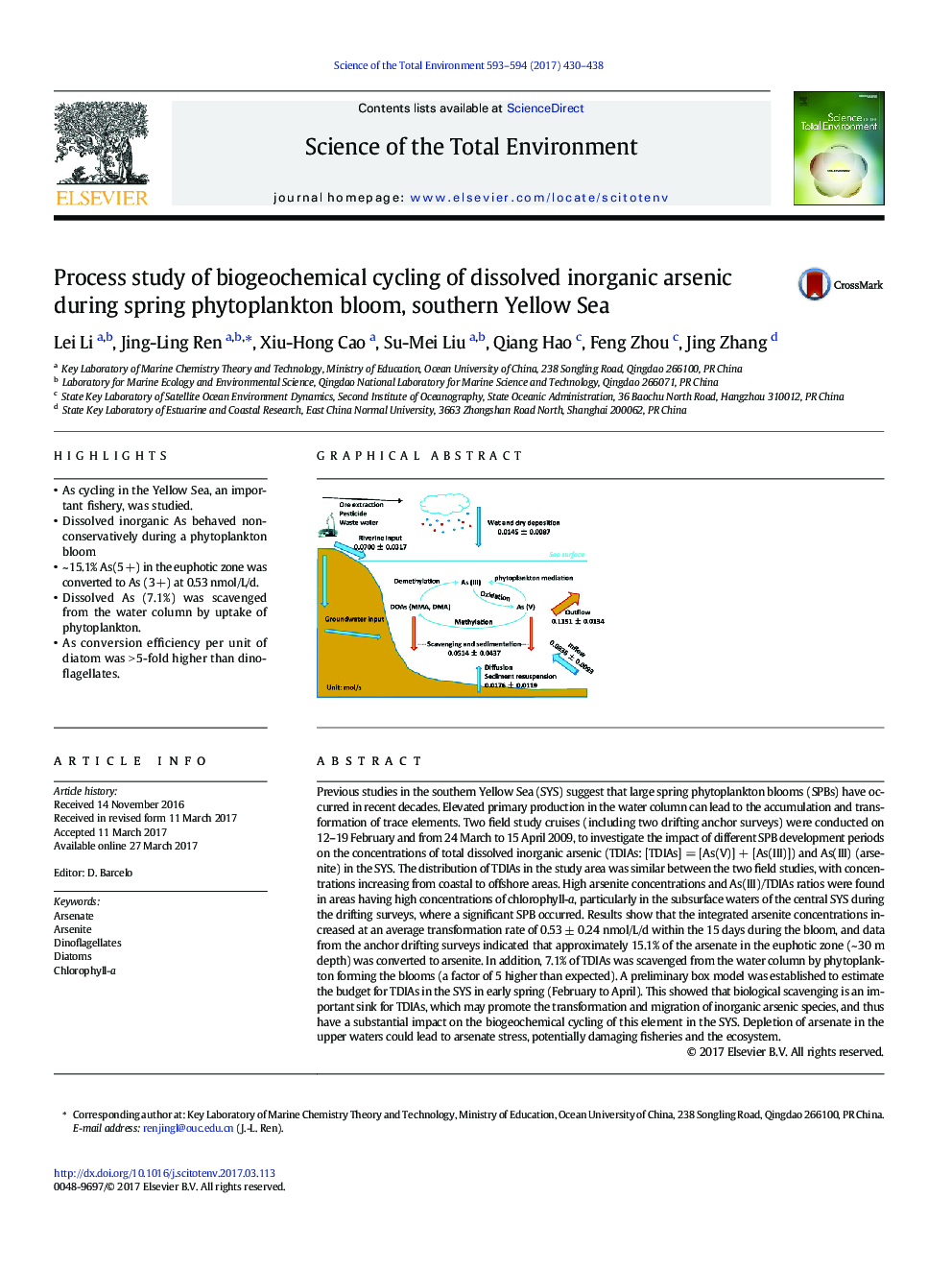| کد مقاله | کد نشریه | سال انتشار | مقاله انگلیسی | نسخه تمام متن |
|---|---|---|---|---|
| 5750871 | 1619702 | 2017 | 9 صفحه PDF | دانلود رایگان |
- As cycling in the Yellow Sea, an important fishery, was studied.
- Dissolved inorganic As behaved non-conservatively during a phytoplankton bloom
- ~Â 15.1% As(5Â +) in the euphotic zone was converted to As (3Â +) at 0.53Â nmol/L/d.
- Dissolved As (7.1%) was scavenged from the water column by uptake of phytoplankton.
- As conversion efficiency per unit of diatom was >Â 5-fold higher than dinoflagellates.
Previous studies in the southern Yellow Sea (SYS) suggest that large spring phytoplankton blooms (SPBs) have occurred in recent decades. Elevated primary production in the water column can lead to the accumulation and transformation of trace elements. Two field study cruises (including two drifting anchor surveys) were conducted on 12-19 February and from 24 March to 15 April 2009, to investigate the impact of different SPB development periods on the concentrations of total dissolved inorganic arsenic (TDIAs: [TDIAs] = [As(V)] + [As(III)]) and As(III) (arsenite) in the SYS. The distribution of TDIAs in the study area was similar between the two field studies, with concentrations increasing from coastal to offshore areas. High arsenite concentrations and As(III)/TDIAs ratios were found in areas having high concentrations of chlorophyll-a, particularly in the subsurface waters of the central SYS during the drifting surveys, where a significant SPB occurred. Results show that the integrated arsenite concentrations increased at an average transformation rate of 0.53 ± 0.24 nmol/L/d within the 15 days during the bloom, and data from the anchor drifting surveys indicated that approximately 15.1% of the arsenate in the euphotic zone (~ 30 m depth) was converted to arsenite. In addition, 7.1% of TDIAs was scavenged from the water column by phytoplankton forming the blooms (a factor of 5 higher than expected). A preliminary box model was established to estimate the budget for TDIAs in the SYS in early spring (February to April). This showed that biological scavenging is an important sink for TDIAs, which may promote the transformation and migration of inorganic arsenic species, and thus have a substantial impact on the biogeochemical cycling of this element in the SYS. Depletion of arsenate in the upper waters could lead to arsenate stress, potentially damaging fisheries and the ecosystem.
198
Journal: Science of The Total Environment - Volumes 593â594, 1 September 2017, Pages 430-438
